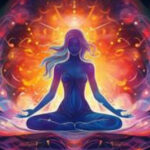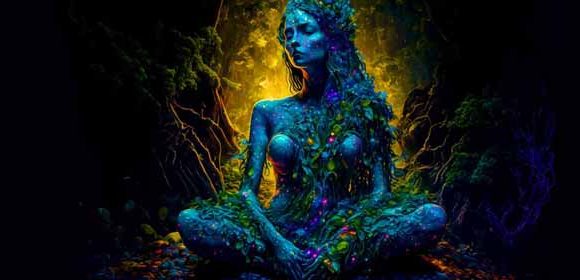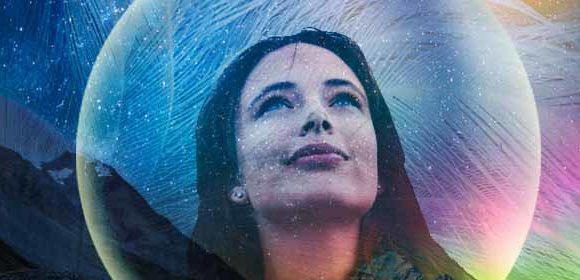In an era where rigid doctrines feel increasingly out of step with the complexities of daily life, a profound shift is underway. People are crafting their own spiritual paths, drawing from a mosaic of traditions to foster personal growth, inner peace, and connection to the universe. This phenomenon, known as personalized spirituality through syncretism, involves blending elements from diverse sources, like mindfulness practices rooted in Buddhism with contemporary manifestation techniques inspired by New Thought philosophy. As we navigate 2025, this trend reflects a broader cultural evolution toward individualism and authenticity in spiritual journeys. No longer confined to the walls of temples or churches, spirituality is becoming a bespoke experience, tailored to fit the unique contours of one’s life.
Syncretism isn’t a new concept; it has historical roots in how cultures and beliefs have intermingled over centuries. Ancient civilizations often merged deities and rituals during conquests or migrations, creating hybrid systems that enriched communal life. For instance, in the Roman Empire, Greek gods were adapted into Roman mythology, blending philosophies for a more inclusive worldview. Today, this blending is democratized by global connectivity. The internet and social media expose us to a vast array of wisdom traditions, from Eastern philosophies like Taoism to Indigenous shamanic practices. A 2025 study highlights that 92% of Americans now adhere to a syncretic worldview, mixing ideas from multiple sources for personal fulfilment. This isn’t about diluting beliefs but enriching them, taking what resonates and leaving the rest.
Why is this Trending Now?
Modern life demands flexibility. With stressors like economic uncertainty, climate anxiety, and digital overload, people seek tools that adapt to their realities rather than dictate them. Younger generations, in particular, are leading the charge, moving away from organized religion toward customized spirituality. A recent survey notes a sharp decline in traditional Christian affiliation over just five years, as individuals opt for paths that emphasize self-discovery over dogma. For many, this means integrating mindfulness meditation, a staple of Buddhist practice, with manifestation rituals, where one visualizes goals to align with universal energy. Imagine starting your day with a yoga flow (from Hindu traditions) followed by journaling affirmations drawn from positive psychology. This syncretic approach allows spirituality to weave seamlessly into routines, offering solace amid chaos.
Examples Abound in Everyday Practice
Consider energy healing: Crystals, long used in ancient Egyptian and Native American traditions for their vibrational properties, are now combined with Reiki, a Japanese technique, to balance chakras, a concept from Indian Vedic texts. Or think of shadow work, inspired by Carl Jung’s psychology, blended with tarot readings from Western esoteric traditions to explore the subconscious. On social platforms, discussions reveal how people fuse Christian prayer with pagan nature rituals, creating eco-spiritual practices that honour the Earth as sacred. In regions like Haiti, Voodoo syncretizes African spiritualities with Catholicism, demonstrating how blending can preserve cultural heritage while adapting to new contexts. Similarly, in Europe, remnants of pagan symbolism, like sun wheels in architecture, mingle with Christian holidays, showing syncretism’s enduring appeal.
The Benefits are Transformative
Personalized spirituality empowers individuals, fostering a sense of agency in an unpredictable world. It promotes holistic well-being: mental clarity from meditation, emotional resilience from manifestation, and communal connection through shared rituals. By curating beliefs, one avoids the burnout of forced conformity, instead cultivating joy and purpose. Research from 2025 indicates this shift correlates with rising interest in spiritual resolutions that prioritize discernment and inner peace. It also encourages ethical living, non-attachment from Taoism might inspire sustainable choices, while karma from Eastern philosophies promotes compassion.
Yet, mindful syncretism is key to avoiding pitfalls. Blending without respect can lead to cultural appropriation, where sacred elements are commodified. Approach with humility: Educate yourself on origins, honour sources, and reflect on intentions. Start small, perhaps combine breathwork with gratitude journaling, and listen to your intuition. If doubts arise, as they do in any journey, view them as invitations to refine your path, much like integrating diverse influences in African or Latin American spiritualities.
In Conclusion
Personalised spirituality via syncretism is a liberating evolution, inviting us to co-create meaning from the world’s rich tapestry of wisdom. As 2025 unfolds, embrace this freedom: Blend, experiment, and evolve. Your spiritual path is yours alone, a custom map to deeper fulfilment, unbound by rigid structures. Whether drawing from ancient texts or modern insights, the essence remains: Seek what lights your soul, and let it guide you home.








